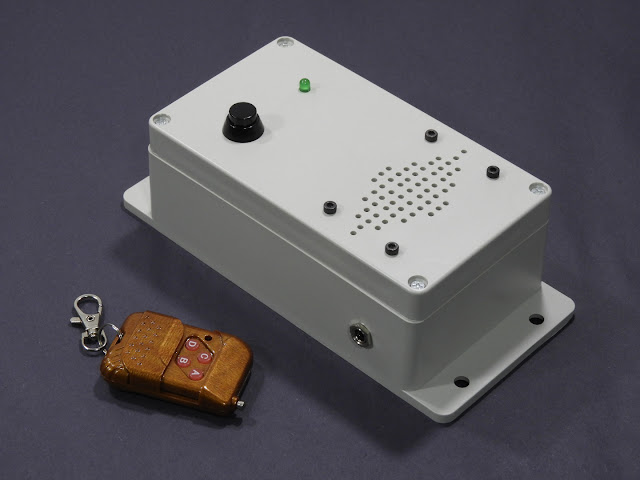This project is about a wireless musical call bell, which I designed to meet some of my friend's requirements. This circuit design uses only the 4000 series CMOS logical ICs, NE555, UM66, and TDA7233 audio amplifier IC. For the remote control, we use a 433MHz 4-channel remote control module. This circuit is designed to work continuously with a low-power external 5V power supply.
 |
| Prototype version of wireless call bell. |
The PCB in this call bell is designed as a single-sided PCB. The dimension of the PCB is 82mm × 50mm.
All the components in this circuit are commonly available through-hole-type components. The whole assembly process of this musical call bell is shown in the video attached to this document.
The RF remote control module we use in this project consists of a remote control decoder and encoding IC. In our version, the transmitter (key fob) has a PT2262 encoder, and the receiver has a PT2272 decoder IC. In the prototype build, the receiver and transmitter are configured to use the default address code. To utilize different address codes, tie appropriate address pin(s) to the VCC or GND on both transmitter and receiver.
To improve the working distance of the receiver, we attach a small helical antenna to the receiving module. This antenna is constructed using a 22 S.W.G telephone wire, and its dimensions are illustrated below:
 |
| Antenna for the 433MHz receiver module. |
With the antenna above, we successfully trigger the bell at a distance of 20 m through a few brick walls.
For the housing, we use a 196mm × 90mm × 60mm ABS project box. The drilling layout for the enclosure is illustrated below:
 |
| Front panel layout. |
All the schematic, BOM, and PCB design files of this musical call bell are available from here.
Comments